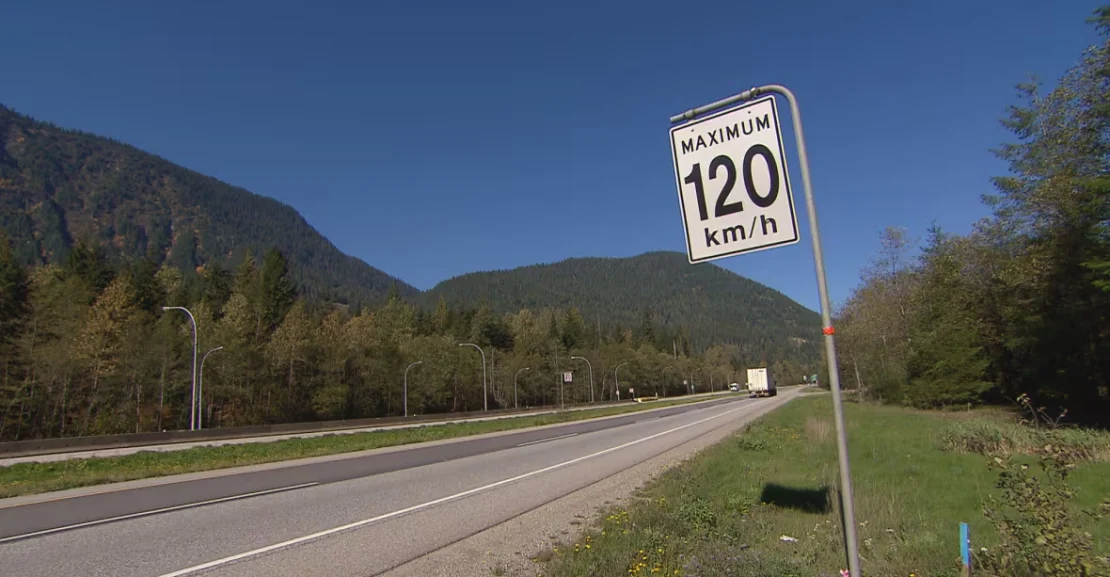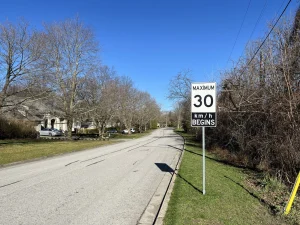Have you ever asked, “What is the driving speed limit in Canada?” If you have, then you should carefully read through this article. You will be glad you did.
Canada is known for its vast landscapes, scenic roadways, and well-maintained highways. These make driving a popular and essential mode of transportation across the country. However, understanding speed limits is important for drivers, whether you’re a local commuter, cross-country trucker, or international tourist.
Speed limits in Canada are strictly enforced, and violations can result in hefty fines, demerit points, or even criminal charges in severe cases. Also, speed limits vary widely depending on the type of road, province or territory, and specific urban or rural settings.
While many areas have consistent speed limits, each province maintains the authority to set its regulations. It’s essential to be informed not just nationally but also regionally.
Let’s explore the driving speed limits across Canada in more detail, along with how they relate to road safety, legal compliance, and even your insurance premiums.
General Driving Speed Limit in Canada
Canada generally sets its speed limits in kilometers per hour (km/h), and there are three primary categories of roads: urban roads, rural roads, and highways. While these categories give a broad overview, individual provinces may post different speed limits based on local conditions.
-
Urban Areas (City Streets): The default speed limit is typically 50 km/h unless otherwise posted. These roads may have frequent intersections, pedestrian crossings, and stop signs.
-
Rural Roads: Speed limits on rural roads usually range from 60 to 80 km/h. Conditions on these roads may vary greatly depending on the region.
-
Highways: Most highways in Canada have posted limits of 100 km/h. However, some provinces, such as British Columbia, allow up to 120 km/h on certain expressways.
Speed Limit Variations by Province
Each province in Canada has the legal authority to establish and enforce its own speed limits. These differences are influenced by geography, traffic density, and road quality.
| Province/Territory | Urban Limit | Rural Limit | Highway Limit |
|---|---|---|---|
| Ontario | 50 km/h | 80 km/h | 100–110 km/h |
| British Columbia | 50 km/h | 80 km/h | 100–120 km/h |
| Alberta | 50 km/h | 80 km/h | 100–110 km/h |
| Quebec | 50 km/h | 70–90 km/h | 100 km/h |
| Manitoba | 50 km/h | 90 km/h | 100 km/h |
| Nova Scotia | 50 km/h | 80 km/h | 100 km/h |
| Newfoundland & Labrador | 50 km/h | 70–80 km/h | 100 km/h |
| Northwest Territories | 45–50 km/h | 70–90 km/h | 95–105 km/h |
READ ALSO:
- Is a police clearance certificate required for a Canada student visa?
- What is the Legal Limit to Drive in Canada?
- Which Country’s Driving Licence is Valid in the UK?
- How Can a Foreigner Get a Driver’s License in the UK?
- Can a Foreigner Get a Driving License in France?
Special Speed Zones and Considerations
School Zones and Construction Sites: Special zones such as school areas and construction sites usually have significantly reduced speed limits during specific hours. Failing to obey these limits can result in doubled fines and more demerit points.
Weather Conditions: Canada’s weather can drastically affect road safety. Snow, rain, and fog can reduce visibility and traction. While the posted speed limit remains the same, the legal requirement is to drive “at a safe and reasonable speed” under prevailing conditions—even if that means driving well below the posted limit.
Variable Speed Limits: Some highways, especially in British Columbia, have digital signs that adjust speed limits in real time based on traffic flow and weather conditions. These are known as variable speed corridors.
Speeding Fines and Penalties
Canada imposes strict penalties for exceeding the speed limit. The severity depends on how far over the limit a driver is caught.
-
Minor speeding (1–20 km/h over): Fines and a small number of demerit points.
-
Moderate speeding (21–49 km/h over): Heavier fines, more demerit points, and possible license suspension.
-
Excessive speeding (50+ km/h over): Often classified as stunt driving, resulting in immediate license suspension, vehicle impoundment, and potentially criminal charges.
Insurance companies often view speeding violations as high-risk behavior. Even one infraction can increase your premium, especially if it leads to license suspension or court involvement.
Canada uses a combination of traditional policing and modern technology to monitor speed. Photo radar systems, speed cameras, and aircraft surveillance are increasingly common in urban areas. These methods are not only effective but also non-intrusive, contributing to safer roads without requiring constant police presence.
Some provinces allow automated speed enforcement in school zones and construction areas. These programs have proven to reduce speeding and improve compliance without bias or human error.
Job Sectors Affected by Driving Laws
Speed limit compliance is especially crucial for professionals in transportation and logistics, as their income and job security often depend on maintaining a clean driving record. Here’s a look at how average salaries align with job sectors that require significant driving:
| Job Sector | Average Salary (CAD) | Driving Requirement | License Type |
|---|---|---|---|
| Long-Haul Truck Drivers | $60,000–$75,000 | High | Class 1 |
| Delivery Drivers | $35,000–$50,000 | Medium | Class 5/G |
| Ride-Share/Taxi Operators | $40,000–$60,000 | High | Class 4/G |
| Courier Service Workers | $38,000–$55,000 | Medium–High | Class 5 |
| Heavy Equipment Operators | $50,000–$80,000 | Low–Medium | Class 3/5 |
Maintaining proper speed is essential not only for safety but also for sustaining employment in these sectors. Companies often run regular driving record checks and may suspend or terminate drivers with repeated offenses.
Understanding and adhering to Canada’s speed limits is more than just a legal requirement—it’s a critical part of keeping yourself and others safe on the road.
With varying speed limits across provinces, frequent changes in weather, and strict enforcement methods, responsible driving should be a top priority for anyone behind the wheel.
Whether you’re a tourist exploring the scenic byways of British Columbia or a truck driver hauling freight across Alberta’s highways, knowing the rules helps you avoid fines, stay insured, and arrive safely.
Respect the limits, adjust to conditions, and you’ll enjoy smooth travels across one of the most beautiful driving destinations in the world.




